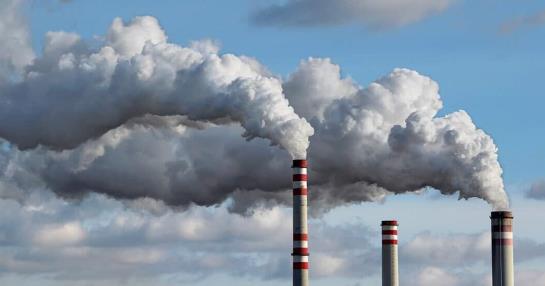(THE CONVERSATION) When an electric company operates a power plant fueled by Coal or natural gas, the greenhouse gases it releases cause damage, but the company is not paying for the damage.
Instead, the costs appear in the billions of tax dollars spent each year to deal with the effects of climate change, such as fighting wildfires and protecting communities from flooding, and in the rising costs of insurance.
This damage is what economists call a “negative externality.” It is a cost to society, including future generations, that is not covered by the price people pay for fossil fuels and other activities that emit greenhouse gases, such as farming.
To try to explain some of the damage, federal lawmakers use what is known as the “social cost of Coal“.
A tug-of-war on the social cost
The social cost of Coala figure in dollars per ton of carbon dioxide Coal released, it is factored into the costs and benefits of proposed regulations and purchasing decisions, such as whether or where the Postal Service should buy gas or electric trucks. Emissions standards for power plants Coal.
That additional social cost can tip the balance on whether the costs of a regulation appear to outweigh its benefits.
The Trump administration reduced the social cost to between $1 and $7 per metric ton of carbon dioxide. Coallow enough to warrant rolling back EPA regulations on power plant emissions and vehicle fuel efficiency.
The Biden administration temporarily raised it and has been preparing to finalize a new social cost that is expected to be more than seven times that of Trump. That could encourage regulators to push for emissions cuts in everything from agriculture to transportation to manufacturing.
However, how and where the new cost estimates are implemented is up in the air. A Trump-appointed federal judge in Louisiana issued an injunction on February 11, 2022, blocking Biden’s interim social cost increase. Even so, federal agencies still need to consider the climate impacts of their regulatory decisions.
What does the social cost mean to you?
One of Joe Biden’s first actions as president was to reverse the Trump administration’s “social cost” gang accounting. The Biden administration brought it back to the Obama-era level, adjusted for inflation, by setting a provisional social cost of $51 per metric ton of carbon dioxide. Coal which would increase over time. If that were a tax Coal paid for by consumers, would increase gasoline by about 50 cents a gallon.
But the social cost of the cost Coal it has no direct effect on the price of gasoline, electricity or emission-intensive goods like steel. Instead, it influences purchases and investments by the government and, indirectly, by private companies and consumers.
A higher social cost of Coal it tells companies that the government sees great benefits in reducing greenhouse gas emissions. Calculating the damage from emissions also helps justify investments in green technology.
For example, the US Postal Service has asked Congress to approve $11.3 billion for a new fleet of gasoline-powered mail delivery trucks. Those vehicles would consume 110 million gallons of gasoline a year. At $51 per ton of Coal issued, that purchase implies a social cost of $1.1 billion over 20 years. Adding such costs could push the government to consider including electric vehicles in the postal service’s future fleet.
Economists now calculate the social cost using integrated assessment models that bring together long-term projections of population, economic growth, and greenhouse gas emissions. These models use emission scenarios to estimate future climate change and then calculate the effects on national and world GDP, and can vary widely depending on the assumptions used.
For example, damage estimates for 2100 produced by the three models currently used in the government costing process range from $80 to $290 per ton. The Biden administration set the interim social cost to rise to $85 by 2050 to account for a larger impact of climate change over time.
The use of models to produce such estimates has become a routine part of policymaking, but they are also highly uncertain.
Why was the social cost of Trump so much lower?
The Trump administration estimate was lower for two reasons: It accounted for climate damage only within US borders; and the administration placed a lower value on future costs by setting a 7% discount rate, more than double the 3% used by Obama and Biden. Economists use different rates to “discount” future benefits from the cost we pay today to get there. A high discount rate on weather means we place a lower value on damage that occurs in the future.
Unsurprisingly, discount rates are controversial. New York State uses a 2% discount rate to produce its current social cost of Coal of $125 per ton. Some analysts advocate a 0% discount rate because anything higher places a lower value on the costs borne by future generations.
The federal judge in Louisiana agreed with the argument presented by the Republican attorney general of that state that global damages could not be considered in the social costs adapted to US regulations. The Department of Justice can appeal the decision. A similar suit in Missouri was dismissed.
Some scholars debate whether a social cost of Coal.
In contrast, the UK uses a “cost-benefit analysis” to determine the value of disposal of Coal. That method uses a goal, net-zero emissions, and calculates the cheapest route to get there. Some leading academics recommend that the US adopt the UK’s approach, while others oppose it.
Other options: taxes on the Coal and emissions caps
There are other ways to account for the costs of climate change.
A tax on Coal it is simpler and more effective, but more difficult to enact because it requires Congress to act. Such a tax would deter people from burning fossil fuels by taxing them for the damage those emissions cause: the negative externality.
Another way to set the price of Coal it uses a market for companies to trade a shrinking number of emission permits. Such cap-and-trade programs are in place today in the European Union, in some US states, including California and Washington, and elsewhere.
Emissions taxes and caps would reduce emissions of Coal, but they are unpopular with voters and Congress because they raise prices. A social cost of Coal it is easier both to enact and to modify through regulatory review, without legislation. It allows the government the flexibility to address climate through routine policy making, but can also be modified by subsequent administrations.
This article is republished from The Conversation under a Creative Commons license. Read the original article here: https://theconversation.com/what-is-the-social-cost-of-carbon-2-energy-experts-explain-after-court-ruling-blocks-bidens-changes-176255.

















